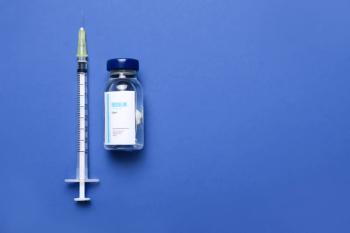
Q&A: The Initiative Bringing Clinical Pharmacy Care to Underserved Patients’ Homes
Clipper F. Young, PharmD, MPH, CDCES, BC-ADM, BCGP, discusses the Touro University California, pharmacist-led Pharm2Home initiative.
Amid the current health care landscape of limited access to primary care providers, leading patients to monitor their own health on a daily basis, initiatives where pharmacists can step in and fill patient care gaps are making a world of a difference in US communities.
“At its core, Pharm2Home was designed to bridge the gap in care for medically underserved individuals, and specifically for the older adults and also those with lower income, in Solano County, California,” Clipper F. Young, PharmD, MPH, CDCES, BC-ADM, BCGP, professor at the Touro University California College of Osteopathic Medicine, told Drug Topics. “We deliver clinical pharmacy services directly to patients’ homes, as well as telehealth. [We’re] helping them manage their health in the crucial period in between their regular appointments.”
In part 2 of our interview with Young, he stepped away from his
Young joined us to discuss what the program is, how he is involved, and what its overall goals within the community are attempting to achieve.
Drug Topics: Can you explain the Pharm2Home initiative and what its goals are?
Clipper Young: The Pharm2Home initiative is really a clinical pharmacist-led chronic disease and medication therapy management program based at where I work, Touro University College of Osteopathic Medicine. At its core, Pharm2Home was designed to bridge the gap in care for medically underserved individuals, and specifically for the older adults and also those with lower income, in Solano County, California. We deliver clinical pharmacy services directly to patients’ homes, as well as telehealth. [We’re] helping them manage their health in the crucial period in between their regular appointments.
[In] our current system, patients might go into their primary care office for 15 minutes, and then they might go there every 3 months, every 6 months. This is far less than the attention and the help that they need. That's the reason why we created this model, to help fill in some of the gaps. Also, after patients get discharged from the hospital, they're often so confused. As you know, they get a lot of medication. Who are the people to help them to sort this out? They have to wait for the primary care provider (PCP). And also at the emergency room, it's really a similar situation. We're here to, hopefully, somehow fill in some of those needs. In terms of the Pharm2Home structure, as of now, we have 2 arms: We have the clinic arm and we have the community health arm.
The clinic arm, specifically, we enroll participants from a local health safety net clinic in Solano County, and then we practice using collaborative practice agreements (CPAs). That, again, allows us to start, to stop, to adjust medications for many of the chronic conditions. Let me name a few of them. Diabetes, and when I say diabetes, there's really different types of diabetes, type 1, type 2, and also atypical diabetes as well. We manage diabetes in a package, [which] means hypertension, hyperlipidemia, heart failure, CKD, asthma, COPD, hypothyroidism, and also, now there's a new thing, hypercortisolism. Many patients with type 2 diabetes (T2D) and also not well-managed T2D, 24% of them actually live with high cortisol levels. Now, we're hoping to somehow help. I ask the question, ‘How can we [as] pharmacists help with this diagnosing process?’ We cannot diagnose, but it doesn't mean that we cannot help within this process to get people diagnosed so that the treatment can be there.
Then the other arm is the community health arm [where] we specifically go out to senior living facilities and also other community sites, like senior centers in a community, to provide MTM—medication therapy management. In this specific setting, our goal is really to perform a comprehensive medication review, and not just that, but really empower residents to bring our recommendations to their PCPs in a sense that we are empowering them, advocating for them. I'm excited to share that, recently, we just published an article specifically to document some of the outcomes that we’ve been able to achieve this past 3-year journey running this community health arm.
Our mission for Pharm2Home is really about getting to know the person behind the diagnosis, behind what we see in the electronic health record (EHR). That is really what they're willing to share with us. Then, by going to their home, we can actually get a lot more information that maybe they're not so willing to share during the appointment, or they just didn't have the time to share because of the 15-minute appointment. We are also promoting health equity. The goals are, first, we want to prevent acute medical emergencies that potentially can lead to hospitalization or lead to ER visits. Specifically, we get calls from our participants telling us that, ‘Oh, my sugar is very low, what do I do?’ or ‘My sugar is very high, what do I do?’ We really address the issue on the phone with our patients, so hopefully they don't need to go to the ER or hospital.
To do that, we really need to improve the medication safety usage and also efficacy by identifying problems. We identify a lot of problems, but we really tackle the problems one by one with [the patients]; that would be the first goal. The second goal is really to empower patients to manage their own health because we only spend—even through Pharm2Home—an hour with them. Then, 99.9% of the time, they're on their own. That means we really need to somehow make them feel confident and also comfortable managing the conditions themselves. Also, when they do see their providers, they are confident in advocating for themselves.
Lastly, [we want] to also encourage the behavioral modification, because this is really the pillar of chronic condition management. So that means we want you to decide that personal approach, so that would lead to, hopefully, that [patients are] more willing to check their sugar, more willing to check their blood pressure, and that would be really the loop, not just for the patient, but for us to adjust the pharmacotherapy. And then, of course, the technology is a big part of that.
Drug Topics: Why are initiatives like the Pharm2Home program just starting to spring up now and how does it highlight the progress that pharmacists have made in both their community and health care as a whole?
Clipper Young: I really believe that initiatives like Pharm2Home are really emerging now due to a combination of needs, capabilities, and also the recognition that we're slowly getting more and more attention. I feel like it's really a story about the evolution of both the health care system and also the evolution of the pharmacy profession. What are those key reasons? First would be, our health care system is really overwhelmed. Our primary care system, our PCPs, are overwhelmed. Again, that’s with the 15-minute traditional model, but that's not enough. We rarely can get into the depth of medications, lifestyle, or consultation, and also patients with multiple conditions. [With Pharm2Home], we are not here to replace anybody. We're just here to offer the needs at the time that the patient really needs help.
Number 2 is really the evolution of pharmacy education, and I believe the post-grad training. Now, the standard for pharmacists is really the Doctor of Pharmacy degree. What that means is that the graduates today are actually getting more advanced clinical training to help them do far more than just dispensing. This is one of the roles, but let's look beyond that. We are trained in comprehensive disease management and starting to apply direct patient care with advanced education. We have post-grad training to support the growing needs. That's why there's a group of us coming together within the diabetes space to establish that diabetes post-grad training consortium to somehow increase the workforce and take care of a lot of people that have diabetes in the US.
The next thing is really the shifting of the model from fee-for-service to value-based care. I feel like Pharm2Home is one of the examples to exemplify this value-based care model. By proactively managing high-risk patients at their homes, we are really demonstrating a clear return on investment by preventing emergency room visits and also hospital admissions. Pharmacists are really ranked as among the most trusted health care professionals in the community. By having this public trust and really combined with [our ability to] use CPAs to help us structure our clinical practice, that has created an environment where pharmacists are really finally being recognized and also empowered to practice at the top of our license.
READ MORE:
Ready to impress your pharmacy colleagues with the latest drug information, industry trends, and patient care tips? Sign up today for our
Newsletter
Pharmacy practice is always changing. Stay ahead of the curve with the Drug Topics newsletter and get the latest drug information, industry trends, and patient care tips.


















































































































